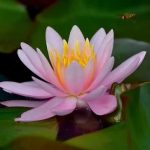Looking for gardening ideas for small spaces? Limited outdoor area doesn’t mean you can’t enjoy a beautiful and thriving garden. With a little creativity and innovation, even the smallest of spaces can be transformed into lush greenery and colorful blooms. In this article, we’ll explore various techniques and strategies for maximizing your gardening potential in limited space.
When it comes to gardening in small spaces, it’s essential to consider vertical gardening, container gardening, hanging gardens, edible gardening, and other creative solutions. Utilizing wall space, repurposing old furniture, or using innovative materials are just a few examples of what we’ll cover in this guide. Whether you have a tiny balcony, a compact patio, or even just a small corner in your yard, there are plenty of options to create your own mini oasis.
In the following sections, we’ll delve into each of these techniques in more detail, providing practical tips and inspiration for creating a stunning garden in even the tiniest of spaces. From maintenance strategies to final thoughts on the beauty and benefits of small-space gardening, this guide has everything you need to cultivate your own pocket paradise. So let’s get started on transforming your small space into a thriving garden.
Vertical Gardening
When it comes to gardening ideas for small spaces, vertical gardening is a popular and space-saving technique. By utilizing wall space, you can create a beautiful and lush garden even in the smallest of areas. Here are some creative ideas for vertical gardening:
- Vertical planters: Install vertical planters on your walls to grow a variety of plants, flowers, and herbs. These planters not only save space but also add an aesthetic appeal to your outdoor or indoor area.
- Trellises and arbors: Use trellises or arbors to support climbing plants such as vines, cucumbers, or tomatoes. This not only maximizes space but also adds visual interest to the garden.
- Hanging pots: Hang pots from the ceiling or on hooks attached to the walls for a cascading effect. This is especially useful for growing trailing plants like ferns, pothos, or spider plants.
With these vertical gardening ideas, you can transform any small space into a green oasis while making the most out of limited square footage.
Plant selection is crucial when it comes to vertical gardening in small spaces. Choose compact and lightweight plants that don’t require a lot of soil and can thrive in containers. Some suitable options include succulents, herbs like basil and thyme, ornamental grasses, and low-growing flowers like pansies or petunias.
Another important aspect of vertical gardening is ensuring proper drainage for your plants. Since containers are often used in this type of gardening, make sure they have drainage holes to prevent waterlogged soil which can lead to root rot. Consider using lightweight potting mix specifically designed for container gardening to promote healthy plant growth.
Overall, with some creativity and thoughtful planning, vertical gardening offers an excellent solution for those wanting to cultivate a vibrant garden in limited space. Whether you’re working with a small balcony, patio, or even just a narrow strip along a wall, there are countless possibilities for adding greenery and beauty through vertical gardening.
Container Gardening
When it comes to gardening in small spaces, container gardening is a game changer. This method allows gardeners to maximize their limited space by using pots and planters to grow a variety of plants, flowers, and even vegetables. Whether you have a tiny balcony, a small patio, or just a few square feet of outdoor space, container gardening offers endless possibilities for adding greenery and beauty to your home.
One of the great things about container gardening is that it allows you to experiment with different plant varieties, colors, and textures without worrying about yard space. From vibrant annual flowers to fragrant herbs and even dwarf fruit trees, the options are nearly limitless. You can also mix and match different plants in containers to create beautiful arrangements that add visual interest to your small space.
In addition to traditional pots and planters, there are also innovative options for container gardening that include vertical planters, hanging baskets, and even window boxes. These creative solutions allow you to take advantage of vertical space and make the most out of every inch available for gardening. With some creativity and planning, container gardening is an excellent way to bring life and color to any small outdoor area.
With the rising popularity of urban living and smaller living spaces, container gardening has become a go-to solution for many people looking to incorporate greenery into their homes. With its flexibility and versatility, this method offers endless gardening ideas for small spaces that are both practical and visually appealing.
Whether you’re new to gardening or an experienced green thumb looking for new challenges, container gardening can be a fulfilling way to cultivate your own little oasis in even the tiniest of spaces.
Hanging Gardens
Choosing the Right Plants
When creating a hanging garden in a small space, choosing the right plants is essential. Opt for plants that have trailing or cascading growth habits, as they will create a lush and full look in your vertical garden. Some great options for hanging plants include pothos, spider plants, English ivy, and string of pearls. These plants not only add greenery to your space but also help purify the air.
DIY Hanging Planters
For those with limited floor or surface space, creating DIY hanging planters can be a game-changer. Utilize old macramé designs or repurpose materials like mason jars and wooden crates to hang your plants from the ceiling or walls. This not only adds visual interest to your small space but also maximizes the use of vertical areas for gardening.
Maintenance Tips
In order to keep your hanging garden thriving, it’s important to maintain it properly. Regularly check for any signs of pests or diseases and prune the plants as needed to maintain their shape and size. Additionally, ensure that you are providing adequate light and water according to each plant’s individual needs. Proper maintenance will ensure that your hanging garden continues to enhance your small space with its green beauty.
By implementing these ideas for creating a lush, vertical garden with hanging plants in small spaces, individuals can transform even the tiniest areas into vibrant and lively gardens. Plus, these innovative gardening solutions not only add beauty but also contribute to a healthier living environment by incorporating more greenery into daily life.
Edible Gardening
When it comes to small space gardening, edible gardening can be a rewarding and practical choice. Whether you live in an apartment with a balcony or a home with a tiny yard, there are plenty of creative ways to grow herbs and vegetables in limited space. One popular method is vertical gardening, where plants are grown on walls, trellises, or other vertical structures. This allows for the use of vertical space rather than relying solely on the ground.
Container gardening is another great option for growing herbs and vegetables in small spaces. Using pots, planters, or other containers can maximize limited space by allowing you to place them on balconies, patios, or even windowsills. This method also makes it easier to move plants around to find the best sunlight and conditions for growth.
For those who have minimal floor space but ample wall space, hanging gardens can also be a fantastic way to cultivate herbs and vegetables. By suspending planters from hooks or installing shelves for pots, you can create a lush garden in what might seem like unused spaces. Additionally, using innovative solutions such as repurposing materials or old furniture can help make the most out of any available space.
Given these various options for growing herbs and vegetables in small spaces, it’s important to keep maintenance tips in mind as well. Adequate watering, proper soil nutrition, and regular pruning are essential elements that contribute to maintaining a healthy and thriving small space garden.
| Edible Gardening Methods | Advantages |
|---|---|
| Vertical Gardening | Utilizes wall space efficiently |
| Container Gardening | Maximizes limited space with versatile containers |
| Hanging Gardens | Cultivates plants in unused wall spaces |
Creative Solutions
When it comes to small space gardening, thinking outside the box is essential. Fortunately, there are plenty of innovative ideas and creative solutions for making the most of limited gardening space. One such idea is repurposing old furniture to serve as planters or garden storage.
For example, an old wooden dresser can be transformed into a vertical garden by removing the drawers and adding soil and plants to each compartment. This not only adds a unique aesthetic to your small space garden but also provides a practical solution for planting in a confined area.
In addition to repurposing old furniture, there are countless other materials that can be used creatively in small space gardening. For instance, household items like mason jars, tin cans, or wooden crates can be upcycled into charming planters for herbs or small flowers. By thinking creatively about how to use items that would typically be discarded, individuals can create a sustainable and visually appealing garden in even the smallest of spaces.
Moreover, utilizing vertical space efficiently can also involve repurposing materials such as pallets or wooden planks to create wall-mounted planters or shelving units. This not only maximizes available space but also adds an eye-catching dimension to a small space garden. With these innovative ideas and repurposed materials, gardening in small spaces becomes not only feasible but also exciting and environmentally friendly. These creative solutions provide endless possibilities for transforming any confined area into a thriving green oasis.
Repurposing Furniture: Giving New Life to Old Pieces
One effective way to incorporate greenery into small spaces is by repurposing old furniture for gardening purposes. Whether it’s using an antique chair as a planter stand or transforming a non-functional bookshelf into a vertical herb garden, repurposing furniture adds character and functionality to any compact outdoor or indoor setting.
Upcycling Household Items: From Trash to Treasure
Another approach for innovative small space gardening involves upcycling everyday household items into planters or garden decor. By reimagining items like tea cups, wine bottles, or wooden crates as containers for plants, individuals can add flair and personality to their miniature gardens while reducing waste at the same time.
Utilizing Vertical Space With Repurposed Materials
In order to make the most of limited square footage in small space gardens, vertical gardening techniques using repurposed materials are key. By arranging recycled pallets as living walls or fashioning hanging baskets from reclaimed textiles, individuals can optimize their gardening potential while minimizing environmental impact at the same time.
Maintenance Tips
Maintaining a small space garden requires thoughtful planning and regular upkeep to ensure that it remains healthy and thriving. One essential maintenance tip for small space gardening is to pay close attention to watering needs, as limited soil in containers and vertical planters can dry out quickly. It’s important to check the moisture level of the soil regularly and water accordingly to prevent plants from drying out.
In addition to watering, fertilizing is also crucial for small space gardens. With limited soil nutrients, plants may require more frequent feeding to stay healthy and produce vibrant blooms or bountiful harvests, especially in edible gardens. Using a slow-release fertilizer or organic compost can help provide essential nutrients over an extended period.
Another crucial aspect of maintenance for small space gardens is pest and disease management. Due to the confined nature of small gardens, pest infestations and diseases can spread quickly and wreak havoc on delicate plants. Regularly inspecting your garden for signs of pests or diseases and taking prompt action, such as removing affected leaves or using natural remedies like neem oil, can help prevent these issues from escalating.
| Maintenance Tips | Strategies for Keeping a Small Space Garden Healthy |
|---|---|
| Pay close attention to watering needs | Regularly check the moisture level of the soil and water accordingly. |
| Fertilizing | Use slow-release fertilizer or organic compost for essential nutrients. |
| Pest and disease management | Regularly inspect your garden for signs of pests or diseases; take prompt action if needed. |
Final Thoughts
In conclusion, gardening in small spaces offers a world of possibilities for plant lovers who may not have expansive yards or outdoor areas. With the right gardening ideas for small spaces, individuals can transform even the smallest balcony, patio, or indoor space into a stunning and verdant oasis.
The beauty of vertical gardening, container gardening, hanging gardens, and edible gardening is that they allow anyone to bring nature into their living space and enjoy the benefits of fresh air, greenery, and even homegrown produce.
One of the most exciting aspects of gardening in small spaces is the opportunity for creativity and innovation. By thinking outside the box, individuals can repurpose old furniture or materials to create unique and beautiful garden displays. Whether it’s using a ladder as a plant stand or transforming an old pallet into a vertical garden, the options are endless when it comes to making the most out of limited space.
Ultimately, maintenance is key to keeping a small space garden thriving. With regular care and attention, even the tiniest garden can flourish and provide endless joy to its caretaker. As more people embrace sustainable and eco-friendly lifestyles, gardening in small spaces becomes an increasingly attractive option. Not only does it allow individuals to connect with nature on a daily basis but also serves as a means to contribute positively to the environment – one potted plant at a time.
Frequently Asked Questions
How Do I Maximize My Small Garden Space?
Maximizing a small garden space involves utilizing vertical gardening techniques such as trellises and hanging planters to make the most of limited square footage. Choosing compact or dwarf varieties of plants can also help optimize space.
What Vegetable Gardens Grow in Small Spaces?
Vegetables like tomatoes, peppers, lettuce, spinach, radishes, and herbs like basil and cilantro are well-suited for small gardens. These plants can thrive in containers or raised beds, making them ideal choices for limited spaces.
How Do I Design a Small Garden Idea?
When designing a small garden, consider incorporating versatile multi-purpose furniture like benches with built-in storage or foldable tables and chairs that can be tucked away when not in use. Using mirrors to create the illusion of more space and strategic lighting can also enhance the overall design of a small garden area.

Welcome to my gardening blog! I am passionate about plants and enjoy sharing my knowledge and experiences with others. In this blog, I will write about everything related to gardening, from tips on how to get started to updates on my own garden projects.





